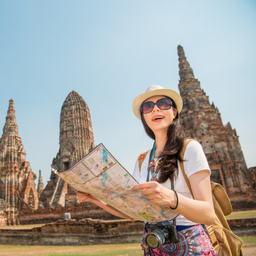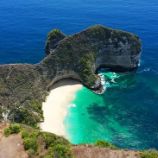Topkapi palace
Point
Find a guide to explore this place.
Topkapi Palace is the subject of more colorful stories than most world museums. Libidinous sultans, ambitious palaces, beautiful concubines and intrigues lived and worked here between the 15th and 19th centuries of the Ottoman Empire. Visiting the rich pavilions of the palace, the jewelery full of jewelery and the expanding Harem offered a fascinating perspective to their lives. And he lived here until his death in 1481. The sultans who came after Fatih lived in the Topkapi Palace on the banks of the Bosphorus until the 19th century when they moved to the flashy European-style palaces. Take a look at the fancy structure in the cobbled square. Ahmet Fountain & nbsp;. On the left side, there is a Byzantine Church, which is known as the Hagia Irini. During the Ottoman period, only the Sultan and Valide Sultan (the mother of the sultan) were entered from the Middle Gate on horseback. Everyone else, including the Grand Vizier, had to leave.
The second court has a natural park -like environment. Unlike typical European palaces with a large building with outer gardens, Topkapı Palace was built around a central storage. Since Topkapı is valued by the sultans because of its beauty, it is said to change color when it is touched with toxic foods, the Chinese saladons hold a small part of the porcelain wide collection. Hümâyûn). The Council met here to discuss state issues, and the sultan was sometimes secretly listened to the golden grid on the wall. The room on the right exhibits hours from the palace collection. """" -1.JPG 1119W, https://cdn.yerelrehber.com/uploads/2020/01/topkapi-1-768x423.jpg 768W """"Sizes ="""" 100vw """"width ="""" 100%""> The entrance to the Harem is under the Tower of Justice on the west side of the second court. If you decide to visit - and we definitely recommend you to do it - you need to buy a special ticket. When the rooms were closed for restoration or stabilization, the visitor route in the Harem changes, so some of the areas mentioned here may not be open during your visit. In more clear reality, these were imperial family neighborhoods and every detail of the Harem life was ruled with tradition, obligation and ceremony. The word ‘harem ıyla literally means‘ forbidden ’or‘ special ’. After entering the Harem, girls would receive education in Islam, in Turkish culture and language, as well as in makeup, dress, friendship, music, reading, writing, embroidery and dance arts. Then, first the sultan's concubines and children, then the Sultan of Valide and finally - especially if they are attractive and talented - the sultan entered a meritocracy waiting for him. was allowed. If a wife gave birth to a son, he would be called Haseki Sultan; If he brings him a daughter, Haseki was the woman. The effect on the sultan, spouses and concubines and state issues was usually deep. During the reign of Murat (r 1574-95); & nbsp; the harem of the previous sultans were in the Old Palace near Beyazıt Square today. It is approached over the transportation door & nbsp;. and a dormitory of the Palace Guards, which are a dormitory of the Palace Guards, which are meticulously restored with the windings of the magnificent Iznik tiles dating from the 17th century, & nbsp; Botanic motifs and inscriptions from the 17th century Qur'an, and once used by a marble passenger block used by the sultans, there are & nbsp; There are depictions of Mecca in the Tiles of the Century. Figure>
Beyond this room & nbsp; Kütahya tiles decorated with the courtyard & nbsp; The black eunuchs sent as a gift were then under control. VAR. A room decorated with a chimney and then there are apartments of Valide Sultan, the power center in Harem. Valide Sultan, one of these fancy rooms, controlled and checked his huge ‘family .. Particular attention is to be considered that the beautiful 19th century wall paintings with pastoral landscapes of Istanbul and the hall of Valide Sultan, who is quite double baths dating from 1585; Gilded bronze railings were later added. ; The hall was built during the reign of Murat, III. Osman (1754-57 r) was retected in baroque style by order. Murat Privy Room is located & NBSP; The fields are then the 18th century additions. Second, it is covered with wooden panels decorated with painted flower and fruit paintings.
III. When he returned to Murat's Privy Room, two of the most beautiful rooms in the Harem - & nbsp; twin pavilions / apartments of the prince of the Crown Prince are around 1600 these two rooms; Make a note of Iznik Tiles panels. & Nbsp; Vitray is also remarkable. ; niche in a minaret showing the direction of the direction)
The third court & nbsp; The 18th century, but renewed in the 18th century & nbsp; the audience room & nbsp;. He examined. There is a Ahmet Library & NBSP;.
On the eastern edge of the third court & nbsp; There are sacred storage rooms on the other side of the third court in the third court & nbsp; On the 15th day of the sacred bear, the rooms were opened only once a year to respect our Prophet. Constantine Kapidagli's & nbsp; Sultan III. A great picture of Selim's ceremony ceremony & nbsp;. Yeşim has an incredible collection of objects made of pearl and diamonds or decorated with them.
When it is reopened, pay attention to the magnificent Süleyman Süleyman Sword, which was designed by Sedefhar Mehmet Ağa, the mother of the pearl, and the extraordinary throne of Ahmed I (ie Arife Throne). Sultanahmet Mosque. It includes hours. ; There is a pavilion of the chief physician of the Mecidiye & nbsp; a few steps away from the mansion & nbsp; ;. & nbsp; III .Ahmet during the period, the tulip garden outside the buffet was full of varieties of the last flower. There is a small structure built as a pitoresque place & nbsp; Ramadan fast. One of the latest examples of architecture, & NBSP; Baghdad Pavilion & Nbsp;, built to commemorate the victory over this city. The outer walls of the room, which was built by Ibrahim I in 1640 by Ibrahim I, are decorated with especially beautiful tile panels. 1 For adults is 60 TL . Combined Tickets (Topkapı Palace + Aya Irene) section 100 TL for local visitors, 320 TL for foreign visitors. If you just want to visit the Hagia Irini Museum & nbsp; 40 TL, If you want to visit the harem section 50 TL . Prices □ h3>
Topkapi Palace Combined Ticket I (Topkapi Palace + Aya Ineli) Tr> Aya iini Address: Cankurtaran, 34122 Fatih/Istanbul Services Offered Explore with Guide Guest Comments Domestic Visitors Ticket Price: Discounted Ticket Price: 30 TL 130 TL 420 TL PRICE: """"TABLE"">
150 TL 40 TL 120 TL : 15 TL Where is the Topkapi Palace? It is located in Fatih district which is famous for its places and museums. Open Address: Cankurtaran, 34122 Fatih/Istanbul Metrobus, Fatih Bus and You can reach the Topkapi Palace by renting a car from Istanbul . You can explore more historical locations and museums to visit by visiting the museums of Istanbul museums . /p>
working hours: 09:00 - 17:00
Opening Date: & nbsp;"""
Features
 Credit Card
Credit Card
 No Smoking
No Smoking
 Car Park
Car Park
 Museum
Museum
 Reservation
Reservation
 Travel Online
Travel Online
 Free
Free
 Historical Place
Historical Place
 Museum Card
Museum Card
 Open Air
Open Air
 Visit
Visit
Guides
All Comments
4.3

 English
English Türkçe
Türkçe























@selamehopurcuoglu
Topkapı'ya gelmeden önce bir müze kart edinin çünkü orada müze kartı olanlar da herhangi bir yönlendirme olmadığı için sıraya girmek zorunda kalıyor. Kimse de bunu söylemiyor. Eğer müze kartınız varsa sarayın içindeki tüm bölümlere istediğiniz gibi girebiliyorsunuz. (İnternetten de alabilir ve uygulamayı indirerek QR kodla girebilirsiniz.) Naçizane belirtmek istedim? Topkapı ya ikinci gidişim ve her gidişimde çok kalabalık oluyor diyebilirim. Özellikle son gidişimiz ara tatile denk geldi ve böyle bir kalabalık olamaz dedik yaa? ama gezebildik. Kutsal emanetler kısmında 1 saat sıra bekledik diyebilirim. Ama saray burnu manzarası harikaydı? Osmanlı döneminde bu manzara nasıldı acaba diye hayal kurmaktan kendimizi alıkoyamadık? ama yine orası da kalabalıktı ve güzel fotolar çıkmadı hava da bozuk olduğu için isli puslu çıktı fotolarımız. Ama yine de güzel ve değer bir gezi oldu bizim için. (Bir de yetkililere şunu söylemek istiyorum eğer foto çekmeyin yasak diyorsanız bunun önlemini düzgün alın. Çünkü kimse uymuyor buna yok yaa öylesine söylüyoruz diyorsanız da bazı insanları aradan seçip uyarmayın sadece o yapıyormuş gibi insanları rencide ediyorsunuz.)
@tamercebi3878
Çocukluğumdan beri giderim ve herzaman bir kısmı kapalı veya restarasyondadır. Mekan olarak mükemmel bir tarihi olan yer ancak çok daha güzel eserler sergilenebilir diye düşünüyorum. Gittiğim gün şansa sistem arızasından bilet satışıda olmuyordu. Müze kart çıkartıp girdimki çok uygun fiyat oluyor bence ve diğer müzelerdede geçerli. Çalışanlar fazla sert müdahale ediyor no photo no photo diye. giriş ücreti yabancılara 420 tl yerlilere müze kart 60 tl
@aysegulbirincia9528
Topkapı Sarayı Müzesini çocukken okul gezisiyle ziyaret etmiş ve büyülenmiştim.. Aynı heyecanla oğluma anlattıklarımı göstermek adına bu yaz müzeyi ziyarete geldik ama eserlerin bir çoğunu göremedik. Mesela Osmanlı Sultanlarının / Valide Sultanların kaftanları, mücevherleri.. Kaşıkçı Elması bile silahların olduğu binada bir köşeye sıkışmış gibi duruyordu. Girdiğimiz müze alanları havasızdı. Bir şişe su alana kadar kutsal emanetler bölümündekine benzer bir kuyruk bekleyip suyun bittiği haberini aldık. Sonra büfeye yönlendirildik, o gürüh yine kuyruğa girip soğuk su da alamadık.. İstanbul'a enfes bir bakış alanı, harika bir saray, peyzaj ve genel bakımlılığı güzeldi. Turizm sezonu yerine bahar aylarında gezmek en doğrusu olacaktır.
@arzutasci
Sıra beklemeyelim ve daha ucuza mal olsun diye Müze Kart satın aldık. Buraya kadar her şey güzel. İyi çalışan bir uygulaması var, girişte barkod oluşturup kolayca giriliyor, sıra beklemek yok tamam da.. 18 yaşından küçük öğrenci çocuğunuz varsa iş zor. Onlar için ücretsiz geçiş bileti oluşturulmasını istiyorlar. Bunun için 6 numaralı öncelikli gişeye gidin. Diğer gişeleri beklemek gerekmiyor 6 numaralı gişede bu işlem yapılıyor (bizim ziyaret ettiğimiz 12 Ağustos 2022 günü böyle idi). Güzel bir dijital uygulama ufak bir eziyet olmadan kullanılamıyor ne yazık ki. Bana oluşturduğu gibi belli yaştaki çocuğuma da uygulama üzerinden barkod oluşturup girebilmek ne hoş olurdu. Neticede devlet kurumları MERNİS üzerinden bu bilgilere çok rahat ulaşıyor. Müze hakkında bol bol bilgi, yorum bulursunuz. Ben çocuklu aileler için bu bilgiyi eklemiş olayım. İyi gezmeler herkese..
@arzutasci
Topkapı Sarayı (Osmanlı Türkçesi: طوپقپو سرايى), İstanbul Sarayburnu'nda, Osmanlı İmparatorluğu'nun 600 yıllık tarihinin 400 yılı boyunca, devletin idare merkezi olarak kullanılan ve Osmanlı padişahlarının yaşadığı saraydır. Bir zamanlar içinde 4.000'e yakın insan yaşamıştır. Topkapı Sarayı Fatih Sultan Mehmed tarafından 1478’de yaptırılmış, Abdülmecid’in Dolmabahçe Sarayı’nı yaptırmasına kadar yaklaşık 380 sene boyunca devletin idare merkezi ve Osmanlı padişahlarının resmi ikâmetgâhı olmuştur. Kuruluş yıllarında yaklaşık 700.000 m²'lik bir alanda yer alan sarayın bugünkü alanı 80.000 m²'dir. Topkapı Sarayı, saray halkının Dolmabahçe Sarayı, Yıldız Sarayı ve diğer saraylarda yaşamaya başlaması ile birlikte boşaltılmıştır. Padişahlar tarafından terk edildikten sonra da içinde birçok görevlinin yaşadığı Topkapı Sarayı hiçbir zaman önemini kaybetmemiştir. Saray zaman zaman onarılmıştır. Ramazan ayı içerisinde padişah ve ailesi tarafından ziyaret edilen Kutsal Emanetler'in bulunduğu Hırka-i Saadet Dairesi’nin her yıl bakımının yapılmasına ayrı bir önem verilmiştir.
@servetcakir7856
Tarihi yarımadadaki bütün mekanlar gibi burası da aşırı kalabalık özellikle de hafta sonları. 1. Avluya giriş ücretsiz. 2. ve 3. Avluya giriş ücretli. Müzekart geçerli ama Müzekart öğretmenlere ücretsiz olmasına rağmen burası Millî saraylara bağlı olduğu için; öğretmen indirimi burada geçerli değilmiş. Turistler için 10'dan fazla bilet gişesi varken, yerli turistler için Sadece Bir tane gişe vardı. O da çok yavaş işliyordu. Bir saatten fazla bilet sırası beklemek durumunda kaldım. Önceden Müzekartınızı almanızı tavsiye ederim.
@meltemyilmaz9040
Topkapı Sarayı, Osmanlı Sultanlarının ikametgâhı, devletin yönetim ve eğitim merkezidir. İstanbul fatihi Sultan II. Mehmed tarafından 1460-1478 tarihleri arasında yaptırılmış olan ve zaman içerisinde bazı ilavelerin yapıldığı sarayda, Osmanlı padişahları ve Saray halkı 19'uncu yüzyıl ortalarına kadar ikamet etmiştir. Topkapı Sarayı, Osmanlı monarşisi 1922’de kaldırıldıktan sonra, 3 Nisan 1924’te Mustafa Kemal Atatürk’ün emriyle müzeye dönüştürülmüştür. Fatih Sultan Mehmet ve Topkapı Sarayı Fatih Sultan Mehmed, fetihten sonra Beyazıt’ta bugünkü İstanbul Üniversitesi’nin bulunduğu yerde, daha sonra “Eski Saray” olarak anılacak olan bir saray yaptırmıştır. Fatih, bu ilk saraydan sonra, önce Çinili Köşk’ü, ardından da yapımı tamamlandığında yerleşecek olduğu Topkapı Sarayı’nı inşa ettirmiştir. Fatih, bu saraya Osmanlıca'da “Yeni Saray” anlamına gelen “Saray-ı Cedid”ismini vermiştir. Yeni Saray’a Topkapı Sarayı denmesi ise şöyle gerçekleşmiştir: Sultan I. Mahmud tarafından Bizans surlarının yakınına yaptırılan ve önündeki selam topları nedeniyle “Topkapusu Sahil Sarayı” denilen büyük ahşap sahil sarayı bir yangında tamamen kül olunca, bu sarayın ismi yeni saraya verilmiştir
@eminekarakurt
Çocukken birkaç kez gitmiştim ama unuttuğum çok şey olmuş. En beğendiğim kısım kutsal emanetler oldu. Bir diğeri de Dış Hazine bölümü idi. Bir elin parmak sayısını geçmeyen türkler ve sıralarda bekleme yaparak insanları bunaltan turistlerle doluydu. Her ne kadar insan uzun süre kalıp incelemek istese de diğer insanlara eziyet olmaması için hızlıca bakıp çıkmak zorunda kalıyorsun tabi bunu umursamayıp görevlilere kaç kez uyarı yaptıranlar da cabası.. Mimarisi çok güzel kiler, mutfak gibi alanlar muhafaza edeceği şeye göre soğuk ya da mevsim sıcaklığında. Mücevherleri göremedik sadece Kaşıkçı Elması oradaydı. Gidip görülmesi gereken yerler. Hiçbir şey olmasa da kutsal emanetler yeter.
@bunyamintatli4378
Bir yanda İstanbul’da olup gidemeyenler bu harika yeri bilmeyenler bir yanda da dünyanın 4 bir yanından gelen binlerce turist… içeriye bizim kendi halkımız gidip gezemiyor fiyatlar yüksek tek kişi müze kart 60 TL bir aile gitmek istese 200 300 TL vermek zorunda maalesef İstanbul şartlarında çok zor ama imkanınız varsa mutlaka gidin gezin yüzlerce yıl İmparatorluklara ev sahipliği yaptı padişahlar yetiştirdi bu saray. Öğrenciler 30₺ karşılığında müzekart çıkarıp tüm müzeleri gezebilir o yanı çok güzel. İçinde Hz.Muhammed (sav)’ın değerli eşyalarından tutun bir sürü sahabenin kılıçları değerli eşyaları var. İstanbul’un en harika yeri diyebilirim. Gidip içidekileri görmek bile insana çok güzel bir manevi değer katıyor.